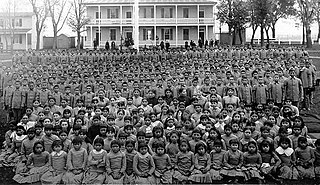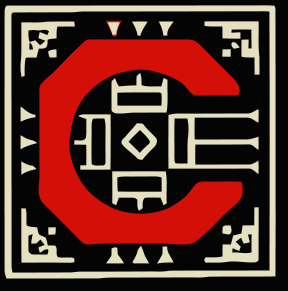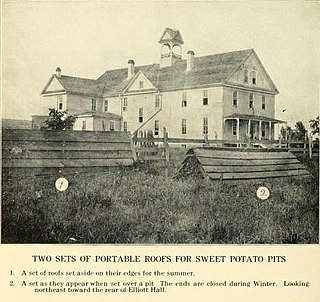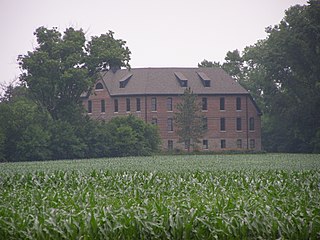 W
WAmerican Indian boarding schools, also known more recently as American Indian Residential Schools, were established in the United States during the mid 17th through the early-21st centuries with a primary objective of "civilizing" or assimilating Native American children and youth into Euro-American culture. In the process, these schools denigrated Native American culture and made children give up their languages and religion. At the same time the schools provided a basic education in Euro-American subjects. These boarding schools were first established by Christian missionaries of various denominations. The missionaries were often approved by the federal government to start both missions and schools on reservations, especially in the lightly populated areas of the West. In the late 19th and early 20th centuries especially, the government paid religious orders to provide basic education to Native American children on reservations, and later established its own schools on reservations. The Bureau of Indian Affairs (BIA) also founded additional off-reservation boarding schools based on the assimilation model. These sometimes drew children from a variety of tribes. In addition, religious orders established off-reservation schools.
 W
WAlbuquerque Indian School was a Native American school in Albuquerque, New Mexico. It was operated by the Bureau of Indian Affairs (BIA).
 W
WBacone College, formerly Bacone Indian University, is a tribal college in Muskogee, Oklahoma. Founded in 1880 as the Indian University by missionary Almon C. Bacone, it was originally affiliated with the mission arm of what is now American Baptist Churches USA. Renamed as Bacone College in the early 20th century, it is the oldest continuously operated institution of higher education in Oklahoma. The liberal arts college has had strong historic ties to several tribal nations, including the Muscogee and Cherokee. The Bacone College Historic District is listed on the National Register of Historic Places.
 W
WThe United States Indian Industrial School in Carlisle, Pennsylvania, generally known as Carlisle Indian Industrial School, was the flagship Indian boarding school in the United States from 1879 through 1918. It took over the historic Carlisle Barracks, which was transferred to the Department of Interior from the War Department. After the United States entry into World War I, the school was closed and this property was transferred back to the Department of Defense. All the property is now part of the U.S. Army War College.
 W
WChemawa Indian School is a Native American boarding school in Salem, Oregon, United States. Named after the Chemawa band of the Kalapuya people of the Willamette Valley, it opened on February 25, 1880 as an elementary school. Grades were added and dropped, and it became a fully accredited high school in 1927, when lower grades were dropped. In 2005, it continued to serve ninth through twelfth grades. It is sometimes referred to as Chemawa High School. It has primarily served students of tribes from the Pacific Northwest and Alaska.
 W
WChilocco Indian School was an agricultural school for Native Americans on reserved land in north-central Oklahoma from 1884 to 1980. It was approximately 20 miles north of Ponca City, Oklahoma and seven miles north of Newkirk, Oklahoma, near the Kansas border. The name "Chilocco" is apparently derived from a Muscogee word meaning "big deer" or horse. In 1912 the Oklahoma Supreme Court heard a case over an election dispute involving whisky and whether the Chilocco reservation was part of Kay County and Oklahoma or "Indian Territory". The U.S. Supreme Court ruled that school land was not an Indian Reservation, that the school was an off-reservation entity, and that the word reservation had various meanings and the area was not reserved as Indian territory.
 W
WDwight Presbyterian Mission was one of the first American missions to the Native Americans. It was established near Russellville, Arkansas in 1821 to serve the Arkansas Cherokees. Because they were required to move to Indian Territory in 1828, the mission was reestablished in Indian Territory in 1829 near present-day Marble City, Oklahoma. The mission is listed on the National Register of Historic Places.
 W
WEducation for Extinction: American Indians and the Boarding School Experience, 1875–1928 is a 1995 history book by David Wallace Adams that covers the history of assimilation era American Indian boarding schools.
 W
WFort Sill Indian School was an American Indian boarding school near Lawton, Comanche County, Oklahoma, United States. The school opened in 1871, with 24 students in the first year, had 300 students in the 1970s, and closed in 1980 although "Native students and administrators, alumni, and Indian leaders fought tenaciously to keep the school alive when the BIA announced its imminent closure". It was founded by Quakers but became nonsectarian in 1891.
 W
WGoodland Academy is a boarding school located in Choctaw County, Oklahoma, 3 miles (4.8 km) southwest of Hugo in southeastern Oklahoma, U.S.. Founded in 1848 as a Presbyterian mission, it is the oldest private boarding school in Oklahoma still in operation.
 W
WThe Intermountain Indian School (1950–1984) was a Native American boarding school in Brigham City, Utah.
 W
WLeupp LOOP is a census-designated place (CDP) in Coconino County, Arizona, on the Navajo Nation, United States. The population was 951 at the 2010 census.
 W
WThe Morris Industrial School for Indians (1887–1909) was a Native American boarding school in Morris, Minnesota, United States. The school was founded and run by Roman Catholic nuns of the Sisters of Mercy order from 1887 until 1896. After that, the school was run by the Office of Indian Affairs of the United States Federal Government from 1898 until 1909.
 W
WMt. Edgecumbe High School is a public boarding high school in Sitka, Alaska in the United States. Located on Japonski Island, across Sitka Harbor from the northwestern corner of downtown Sitka, the school is situated on a portion of Sitka's former World War II-era military installations. Established in 1947 after the military abandoned the area, the school was originally operated by the federal Bureau of Indian Affairs (BIA) as part of a network of boarding high schools, which included schools in Eklutna and Wrangell. After several decades of operation by the BIA, the school was briefly closed in the 1980s before being reopened by the Alaska Department of Education, which operates it today.
 W
WThe Mount Pleasant Indian Industrial Boarding School in Mt. Pleasant, Michigan, was established by an act of the United States Congress in 1891. This provided funding for creation of an education system of off-reservation boarding schools and vocational training centers to educate Native American children. It was extending a model developed and practiced first at the Carlisle Indian Industrial School, which opened in 1879 and was directed by Richard Henry Pratt, an Army officer.
 W
WNavajo Preparatory School is a college preparatory school located in Farmington, New Mexico. The school is fully sanctioned by the Navajo Nation since 1991 when the previous Navajo Academy closed due to lack of funding. The campus is currently undergoing a remodelling project for the past few years that includes new dormitories, classrooms, and an athletic sports complex. The school colors are black, turquoise, yellow, and white which represent the four seasons in Navajo Culture and the mascot is the eagle. The previous school colors for Navajo Mission and Navajo Academy were red, white, and blue. In 2021- 2022 school year, the school color will go back to red, white, and blue.
 W
WOak Hill Industrial Academy was founded as a day school and later became a boarding school for Choctaw Freedmen. It existed from 1878 to 1936. It was located in the far southeastern corner of the Choctaw Nation in Indian Territory in what is now Oklahoma. The original location was in the southwest corner of Section 27 near the present-day Valliant, Oklahoma. But in 1902 it was rebuilt in the northeast quarter of section 29 near the western line of McCurtain County, Indian Territory. The school closed in 1936, and no evidence of it other than a historical marker remains.
 W
WThe Pawnee Agency and Boarding School District lies east of the city of Pawnee in Pawnee County, Oklahoma. Other names are: Pawnee Indian Agency, Pawnee Indian School and Pawnee Indian Boarding School. The District occupies approximately 29 acres (12 ha) of the Pawnee Tribal Reserve, a 726 acres (294 ha) tract that is owned by the Pawnee tribe. Black Bear Creek divides the District from the town. The Pawnee Agency was established as a post office on May 4, 1876.
 W
WThe Phoenix Indian School, or Phoenix Indian High School in its later years, was a Bureau of Indian Affairs-operated school in Encanto Village, in the heart of Phoenix, Arizona. It served lower grades also from 1891 to 1935, and then served as a high school thereafter. It opened in 1891 and closed in 1990 at the orders of the federal government. During its existence, it was the only non-reservation BIA school in Arizona.
 W
WThe Rapid City Indian School was located in Rapid City, South Dakota, and has since been converted into both an asylum and a hospital. The school opened 1898 as part of the federal government's off-reservation boarding school movement for Native Americans and was shut down in 1933 to become a tuberculosis center. The hospital in the past few years has been listed on the market and is currently being considered for demolition, even though local tribes had tried to claim back the land in the past.
 W
WRed Cloud Indian School is a private, Roman Catholic, K–12 school in Oglala Lakota County, South Dakota. It is located in the Roman Catholic Diocese of Rapid City and serves Oglala Lakota Native American children on the Pine Ridge Indian Reservation.
 W
WRiverside Indian School (RIS) is a Bureau of Indian Education-operated boarding school in unincorporated Caddo County, Oklahoma, with an Anadarko address, for grades 4-12.
 W
WSt. Joseph's Indian Normal School is a former school for American Indians in Rensselaer, Indiana. The school building is now known as Drexel Hall and part of the Saint Joseph's College campus. Boarding schools were believed to be the best way to assimilate them into the white culture. The school lasted from 1888 to 1896 and was funded by the U.S. government and Catholic missionaries. It was believed that this was the best way to "civilize" Native Americans and the western territories. Established by the Catholic Indian Missions with funding from St. Katharine Drexel, the school taught 60 Indian children. The Society of Precious Blood operated the school during its years of operation. The students were all boys. When the Indian School was closed, the building was named Drexel Hall. It is one of the first structures of Saint Joseph's College.
 W
WThe Federal Government established the Santa Fe Indian School (SFIS) in 1890 to educate Native American children from tribes throughout the Southwestern United States. The purpose of creating SFIS was an attempt to assimilate the Native American children into the wider United States culture and economy. In 1975, the All Indian Pueblo Council (AIPC) was formed. It was the first Indian organization to utilize the laws in place to contract an education for their children. Eventually, the AIPC was able to leverage complete control of the school and curriculum. In 2001, with the passing of the SFIS Act, the school took ownership of the land. The school resides on the form of a trust, which is held by the nineteen Pueblo Governors of New Mexico. These acts allow for complete educational sovereignty of the school, by the Pueblo.
 W
WThe Seneca Indian School was a Native American boarding school located in Wyandotte, Oklahoma. Initially founded for Seneca, Shawnee, and Wyandotte children, in later years it had many Cherokee students. The school operated from 1872 to 1980.
 W
WSherman Indian High School (SIHS) is an off-reservation boarding high school for Native Americans. Originally opened in 1892 as the Perris Indian School, in Perris, California, the school was relocated to Riverside, California in 1903, under the name Sherman Institute. When the school was accredited by the Western Association of Schools and Colleges in 1971, it became known as Sherman Indian High School.
 W
WThe Stewart Indian School (1890–1980) was an Indian school southeast of Carson City, Nevada that is noted for the masonry work of colored native stone used by student apprentices to build the vernacular-style buildings. The school, part of the Native American boarding schools project, was the only off-reservation boarding school in Nevada. Funding for the school was obtained by Nevada's first senator, William M. Stewart, and it was named in his honor when it opened on December 17, 1890. It has also been known as Stewart Institute, Carson Industrial School, and Carson Indian School.
 W
WTobeluk vs. Lind was a landmark case in Alaskan Native education. The 27 teenage plaintiffs brought suit against the State of Alaska, claiming that Native American boarding schools were discriminatory and unjust. The case is widely known as the "Molly Hootch Case" after the first plaintiff named.
 W
WTuba City Boarding School (TCBS) is a Bureau of Indian Education (BIE)-operated DK-8 boarding school in Tuba City, Arizona.
 W
WWheelock Academy was the model academy for the Five Civilized Tribes' academies. It was started as a missionary school for Choctaw girls, and is still owned by the Choctaw nation. The school closed in 1955 and the only remaining Choctaw school, Jones Academy, became coeducational. The site is located 3 miles (4.8 km) east of Millerton in McCurtain County, Oklahoma. It is owned by the Choctaw Nation and is administered by the Bureau of Indian Affairs.
 W
WWild Westing was the term used by Native Americans for their performing with Buffalo Bill's Wild West and similar shows. Between 1887 and World War I, over 1,000 Native Americans went "Wild Westing." Most were Oglala Lakota from their reservation in Pine Ridge, South Dakota, the first Lakota people to perform in these shows. During a time when the Bureau of Indian Affairs was intent on promoting Native assimilation, William Frederick Cody used his influence with U.S. government officials to secure Native American performers for his Wild West. Cody treated Native American employees as equals with white cowboys.